Weekend in Paris - 2 or 3 days itinerary in the City of Love
- Vanessa Valenti

- Feb 21, 2022
- 21 min read
Updated: Mar 24, 2024
For Valentine's Day what better destination than the city of love? So, perhaps a little bit obvious, but we went back to Paris... or rather, I went back for the third time, but for Enri it was the first one, so I had to plan the perfect itinerary that would allow us to see all the unmissable destinations of this splendid city in just two days. We stayed two full days plus one at Disneyland Paris, excluding the two days we traveled. I am very satisfied because we managed to do everything we had planned, even if we walked a lot.

This is the itinerary of our long weekend in Paris: 11-15 February 2022
❥ Friday, 11th February Late night arrival in Paris
❥ Saturday, 12th February
by metro to Esplanades des Invalides
Breakfast at the Boulangerie Laurent B
Champs de Mars
Eiffel Tower: climb to the tip
Eiffel Tower Carrousel
Jardins du Trocadéro and Place du Trocadéro
Arc de Triomphe
Champs Elysées - Ladurée
Place de la Concorde and Jardins de Tuileries
Palais Royale and Jardins du Palais Royale
Galeries Vivienne
Lunch at Le Moulin de la Vierge
Louvre Museum
Palais Garnier (from outside)
Galeries Lafayette Haussmann - rooftop at sunset
Passages des Panoramas
Notre Dame by night - only from the outside, under (renovation until 2024)
Latin Quarter - dinner at Le Marmiton de Lutece
❥ Sunday, 13th February
Center Pompidou (from outside) and Stravinsky Fountain
Marais district
La Favorite
Place de la Bastille
Rue Cremieux
Notre Dame
Latin Quarter: breakfast at Odette, Shakespeare and Company, Sorbonne - Pantheon - Church of Saint-Etienne-du-Mont (from outside)
Luxembourg Gardens
Cafe de Flores
Musée d'Orsay
by metro to Pigalle: sexy shop and Moulin Rouge
Montmartre: Le Murs de Je t’Aime, Halle Saint-Pierre, Sacré Coeur, Place du Tertre, Le Consulat
Dinner at Frog's
by metro to Eiffel Tower by night from Avenue de Camoens and the Seine, way back to the hotel by metro
❥ Monday,14th February
Breakfast at Du Pain et Des Idées
by train to Disneyland Paris and way back
Dinner at Le Petit Marché
❥ Tuesday, 15th February
Le Marché des Enfants Rouges
Back home
While in Paris we always walked a lot: 31km on Saturday, 28km on Sunday and 21km on Monday at Disneyland. We used the metro only where it was really necessary and I wrote it down on the itinerary. Obviously it's not a sustainable pace for everyone, I know we are used to it; possibly the itinerary can easily be spread over an extra day in the city. If you are looking for some useful information on how to organize your trip, on where to stay and how to get around the city, click here for the article on logistics.
If you are interested in what to eat when in Paris and there, click here for the specific post about food and restaurants. But now let's go into more detail of this splendid city by following our itinerary on the streets of Paris.
Esplanades des Invalides

The Esplanade des Invalides is a large avenue 500 meters long, located in front of the Hôtel national des Invalides, a complex built in the seventeenth century with the aim of housing disabled soldiers. It's an excellent starting point for your day in Paris, easily reachable by Metro (Invalides stop at the very beginning of the avenue), from which in a few minutes you will reach Champs de Mars and the Eiffel Tower. Within the complex you will find three separate museums: the Musée de l'Armée (army museum), the Musée des Plans-Reliefs (museum of military models) and the Musée d'Histoire Contemporaine. The largest and richest of the three is certainly the Musée de l'Armée, which houses many military relics, including the guns that belonged to Napoleon and the Battle of Cassel painting by Joseph Parrocel. Another building in the complex is the splendid Église du Dôme, whose golden dome is inspired by Bramante's project for St. Peter's Basilica in Rome: inside is the tomb of Napoleon Bonaparte. We decided not to visit the complex, admiring it only from the outside, giving priority to other museums and having already been there. Opening hours: every day from 10:00 to 18:00 (closed on Tuesdays, December 25th and January 1st). Prices: Full adult € 14 Reduced € 11 Minors, disabled people, and children up to 25 years of age residing in the European Union: Free
Champs de Mars
Champs de Mars is one of the most famous public gardens in Paris, located on the left bank, facing the Eiffel Tower. Is very popular with tourists and Parisians, an excellent destination for relaxing while admiring the Tower, perhaps taking a picnic under the sun. It's certainly one of the best places to photograph and admire the Tower.
Eiffel Tower

The Eiffel Tower is a metal tower completed in 1889 on the occasion of the universal exhibition and then became the most famous monument in Paris, designed by Gustave Eiffel. Once you reach the base of the tower, whether you come from Champs de Mars or from the opposite side, you can limit yourself to admiring it from the ground or decide to go up to the second floor or to the top, with various purchase options. I recommend that you book your visit online on the official website, unless you decide to go up to the second floor on foot, and then take the lift to the top: this is the only option that can be purchased only and exclusively on site. We chose this solution: in a quarter of an hour you will be on the second floor: the climb is perfectly feasible and not too demanding. In this way you will save something and you will fully enjoy the magnificence of the structure.
Even if you are lucky and you come by on a warm and sunny day, keep in mind that on the tower it's always very breezy and colder, so cover up well. On the second floor of the tower you will find a bar, the Chalet de la Tour Eiffel, and also a souvenir shop, both not very cheap, but certainly impressive. Opening Hours: 9:30 am - 10:45 pm (access to the stairs is until 6:30 pm, except on Saturdays until 10:45 pm)


- 2nd floor lift ticket: gives access to the second floor using the lift.
- Top lift ticket: gives access to the top using a first then a second lift. - 2nd floor stair ticket: gives access to the second floor using the stairs. - Top stairs / lift ticket: gives access to the top using the stairs to the second floor, then a lift to the top (sold only on site).
Perfect spots to admire and photograph the Eiffel Tower:
Champs de Mars
Avenue de Camoens: an alley between some buildings, located on the opposite side of the Seine, reachable in a few minutes from the Jardins du Trocadero
Pont d'Iéna: the bridge that crosses the Seine in front of the Tower
Eiffel Tower Carrousel (at the end of Pont d'Iéna, opposite the Jardins du Trocadéro) - a ride on the carousel costs € 3
Jardins and Place du Trocadéro
on the opposite side of the Seine, on the shore
Eiffel Tower at night: surely the Tower gives its best at night, fully illuminated is definitely a breathtaking and very romantic sight. Keep in mind that the first 5 minutes of each hour (20:00 - 1:00) the tower will glow, making it even more magical. An unmissable show.
Trocadéro Gardens and Place du Trocadéro
Trocadéro Gardens are a green space created in 1937 on the occasion of the Universal Exposition and extend from the Palais de Chaillot to the Seine, facing the Eiffel Tower. They are famous for the wonderful Warsaw Fountain, which is currently undergoing renovations. At the end of the gardens, on a small hill, there's Place du Trocadéro, which street vendors attack every day with their paraphernalia of works of art and miniature models of the Eiffel Tower. It's certainly one of the most evocative places from which to admire the tower, both day and night, even if it's always very crowded.
Arc de Triomphe

The Arc de Triomphe, together with the Eiffel Tower, is certainly one of the most representative and famous monuments not only in Paris, but in all of France. Located at the end of the Avenue des Champs Elysées, with its 50 meters in height, it commemorates the military victories of Napoleon who, in 1806, ordered its construction in honor of the Grand Army. To enter the Arch and climb the 286 steps that will take you to its top, you need a ticket; inside there is a small museum that provides interesting information on its construction. From the terrace it is possible to admire, both day and evening, a unique view of the Champs Elysées. Opening hours: From 1st October to 31st March: 10:00 - 22:30 From 1st April to 30th September: 10:00 - 23:00 Prices: Full adult € 13 - Reduced € 11 Minors, disabled people, and children up to 25 years of age residing in the European Union: Free
Champs Elysées
The Champs Elysées are certainly the widest and most majestic avenues in Paris, 2km long, making up one of the most famous streets in the world. The name refers to the Elysian Fields of Greek and Roman mythology and delimits the so-called Golden Triangle of Paris. With its cinemas, cafes (including Ladurée) and luxury shops, such as Dior, Louis Vuitton and the Galerie Lafayettes, they are a must-see on your trip to Paris from the beginning, from the Arc de Triomphe to the Place de the Concorde.
Place de la Concorde
Place de la Concorde is the largest square in Paris, located at the beginning of the Champs Elysées, and from which you can access the Tuileries Gardens. In the center of the square you will find two magnificent fountains and the very famous Egyptian obelisk of Luxor (currently under renovation), dating back to the 13th century BC. The obelisk, which is also a sundial (its shadow cast on the ground on lines and metal Roman numerals inserted in the pavement of the square allows you to know the time of day), was donated in 1831 to France and is located on the Ax Historique, or the Historical Axis of Paris, an imaginary axis that connects Parisian palaces and attractions.
Tuileries Gardens
The Tuileries Gardens are a French-style gardens, with access from the Place de la Concorde, square and geometric, built in the 17th century and overlooking the Louvre. It's the oldest public gardens in Paris, where both tourists and Parisians enjoy a few hours of sunshine on the numerous deck chairs facing the pond. A walk here is absolutely a must, ideal for a little relaxation, perhaps enjoying a crepes in the many stalls located within the park, before a visit to the Louvre.
Palais Royale and Palais Royale Gardens

Built between 1624 and 1636, the Palais Royal is one of the most important historical buildings in Paris, located in the oldest and most central part of the city, the 1st arrondissement, opposite the Louvre museum. Initially known as Palais Cardinal, since it was built at the behest of Cardinal Richelieu, the palace is currently the seat of the Council of State and the Constitutional Council, and also houses a room of the Comédie Française, called Salle Richelieu. Although it's not possible to visit the interior of the building, the entrance to the gardens is free and free, and they are the ideal place to stroll along the tree-lined avenues or near the large circular fountain located in the center. Special features of the structure are certainly the extravagant columns of Buren with their lights, the large steel spheres of Bury.
Galeries Vivienne
A few steps from the Palais Royale, I would like to point out a little gem: the Galerie Vivienne, built in 1823 in Pompeian neoclassical style by the architect Francois-Jacques Delannoy and more than 150 meters long, it's one of the most elegant covered passages in Paris. In this covered passage you can admire colorful mosaics on the floor and the beautiful glass ceilings. If you have about ten minutes to dedicate to it, you will certainly not be disappointed.
Louvre Museum

The Louvre Museum is one of the largest museums in the world and collects some of the most famous and prestigious works on earth such as the Mona Lisa and the Virgin of the Rocks by Leonardo da Vinci, Two Prisons by Michelangelo Buonarroti, Bacchus and Arianna by Giambattista Pittoni, Love and Psyche by Antonio Canova, the Venus de Milo and the Nike of Samothrace, the Code of Hammurabi. It takes its name from the building that houses it: originally it was a fortress, built at the end of the 12th century during the reign of King Philip II, in subsequent renovations it was a royal and governmental seat. The Louvre is definitely a must-see if you are in Paris for the first time: even if you are not an art enthusiast like me, it's worth a visit if only for the structure and architecture of the building itself. We had booked the tickets online on the official website, in order to be sure to be able to enter without wasting time in unnecessary queues. Consider at least 3 hours as time of stay: obviously the museum would require a full day for a thorough visit, but if you are in Paris only for the weekend it's not feasible.
Opening hours: From 9:00 to 18:00, closed every Tuesday Last admission: one hour before closing Closed: 1st January, 1st May, 25th December Prices: 17 € online on the official website - hourly ticket that allows you to avoid the queue and enter the Pyramid € 15 purchased on the spot - there is always a lot of queues and a limited number of tickets available Minors, disabled people, and children up to 25 years of age residing in the European Union: Free Audio guide (Nintendo DS): € 5

Once under the pyramid, in the Napoléon hall, you will find the ticket offices and the main points of access to the three large areas: Denon, Sully and Richelieu. Each department - Oriental Antiquities, Islamic Arts, Egyptian Antiquities, Greek, Etruscan and Roman Antiquities, Painting, Sculpture, Works of Art, Graphic Arts, to which the collections of African art objects have recently been added, Asia, Oceania and the Americas and the sections dedicated to the history of the building - it is distinguished by a color and each room by a number / name. Even with the map available for free at the entrance, it is not easy to find your way around, the museum is immense, it is quite common to get lost: it has happened to us too!
Palais/Operà Garnier

The Opéra Garnier, or Palais Garnier, is an opera house located in the 9th arrondissement of Paris. Until 1989 it was the first theater in the capital and home to the Paris Opera Ballet, later, after the inauguration of the Opéra Bastille, it has become part of the Opéra national de Paris which uses it mainly for dance performances and Baroque operas. The monument can be visited: it contains a museum and a thematic library, and when rehearsals are not in progress you can also see the theater room with the beautiful painting by Chagall. We didn't make to enter, we were passing through and late for sunset at the Lafayette Galleries, but if you can, drop by: there is a scale reproduction at the Musée d'Orsay and it's splendid. Opening hours: 10:00 - 17:00 (except on show days and in summer). Prices: Full: € 14 (€ 12 in periods when there are no performances) Reduced (from 12 to 25 years): € 10 (€ 8 in periods when there are no performances)
Galeries Lafayette Haussmann

The Galeries Lafayette in Paris is the first department store in Europe, opened in 1893 and currently it has multiple locations throughout the city, even if the original and most majestic one (and which I recommend) is that of Haussmann, not far from the Louvre and a few steps from the Opera Garnier. Here you will find over 3,500 brands of clothing, shoes and accessories, from the cheapest to the most luxurious, as well as beauty products, furniture and lots of food. I strongly advise you to go there, not so much for shopping, but for the very famous Coupole, an extraordinary neo-Byzantine dome built in 1912, which is still today the symbol of Parisian department stores and for the unmissable view of the city that you will enjoy from the Rooftop accessible free of charge to the top floor of the department stores. I strongly advise you to get there at sunset: the view is priceless.
Passages des Panoramas
The Passage des Panoramas is a real gem, not very well known, which connects the Boulevard Montmartre to the Bourse and it was opened in 1799. It's one of the most famous passages still today. Nowadays there are few old postage stamp or post card shops left, almost all the premises have been converted into delicious, particular and very intimate restaurants, but the charm of the old Alsatian printing house, Stern, there since 1840, remains. Super recommended for happy hour or a quiet dinner, but I also recommend that you just pass through it, it's splendid.
Pompidou Centre and Stravinsky Fountain

The unmistakable and extravagant Pompidou center, where art, culture, creativity and non-conformism meet, it's named after President Georges Pompidou and houses the largest collection of modern and contemporary art in Europe, a public library, cinemas and theatrical spaces, spaces for pedagogical activities, a research center on music, bookshops, a restaurant and a bar. The palace was built in the 70s on a project by architects Renzo Piano and Richard Rogers: it's characterized by escalators and large colored pipes that stand out among the ancient buildings and make it an unmissable stop even from the outside on your tour of the French capital. In front of the Pompidou Center you will find the Stravinsky Fountain (or Fountain des Automates), a work made up of 16 mechanical sculptures animated by water jets and tries to visually recreate the atmosphere of Stravinsky's music.

Marais
Marais is the neighborhood where we stayed, so in the various days we had the opportunity to explore it enough: a tour here is a must when you travel to Paris, it's definitely a delightful neighborhood, with many shops, restaurants and good clubs in the evening, and one of the most poetic squares in the city, the place des Vosges. Colorful and extravagant, the Marais is also known for being very popular with the gay community, which has its most important and fun clubs in this neighborhood, we loved it! However, this is above all, and for centuries now, the Jewish quarter.
Marché des Enfants Rouges
The Market of the Enfants Rouges, so named in memory of an ancient orphanage that was once not far away and which dressed children in red, it's the oldest food market in the city of Paris, in fact, it was built at the request of Louis XIII in 1615 to supply the Marais district. It's very popular with locals, a characteristic market where you can stock up on fresh products but also drink and eat in a pleasant and relaxed atmosphere, buying food at one of the many ethnic counters and then consuming it at public tables located at the end of the market. Opening hours: Monday closed Tuesday - Thursday 8:30 am - 1:00 pm, 4:00 pm - 7:30 pm Friday and Saturday 8:30 - 13:00, 16:00 - 20:00 Sunday 8:30 - 14:00
Place de la Bastille
The Place de la Bastille is one of the symbols and the main historical places of Paris: it's located in the area where once stood the fortress of the Bastille, the prison that was stormed and destroyed by the revolutionaries on 14 July 1789 (became a holiday national) and of which, today, only some traces of the perimeter remain. In the center of the square you will find the July Column, Colonne de Juillet, erected in memory of the martyrs of the revolutions of 1830 and 1848. The Opéra National de Paris-Bastille also stands out on the square.
Rue Cremieux
Rue Cremieux is the most colorful street in Paris, little frequented and far from the tourist areas, but a real gem to include in your itinerary. The street has 35 two-story houses, whose colors and decorations are a bit reminiscent of Portobello Road, in London, but I also found a hint of Olufsvej in Copenhagen.
Notre Dame
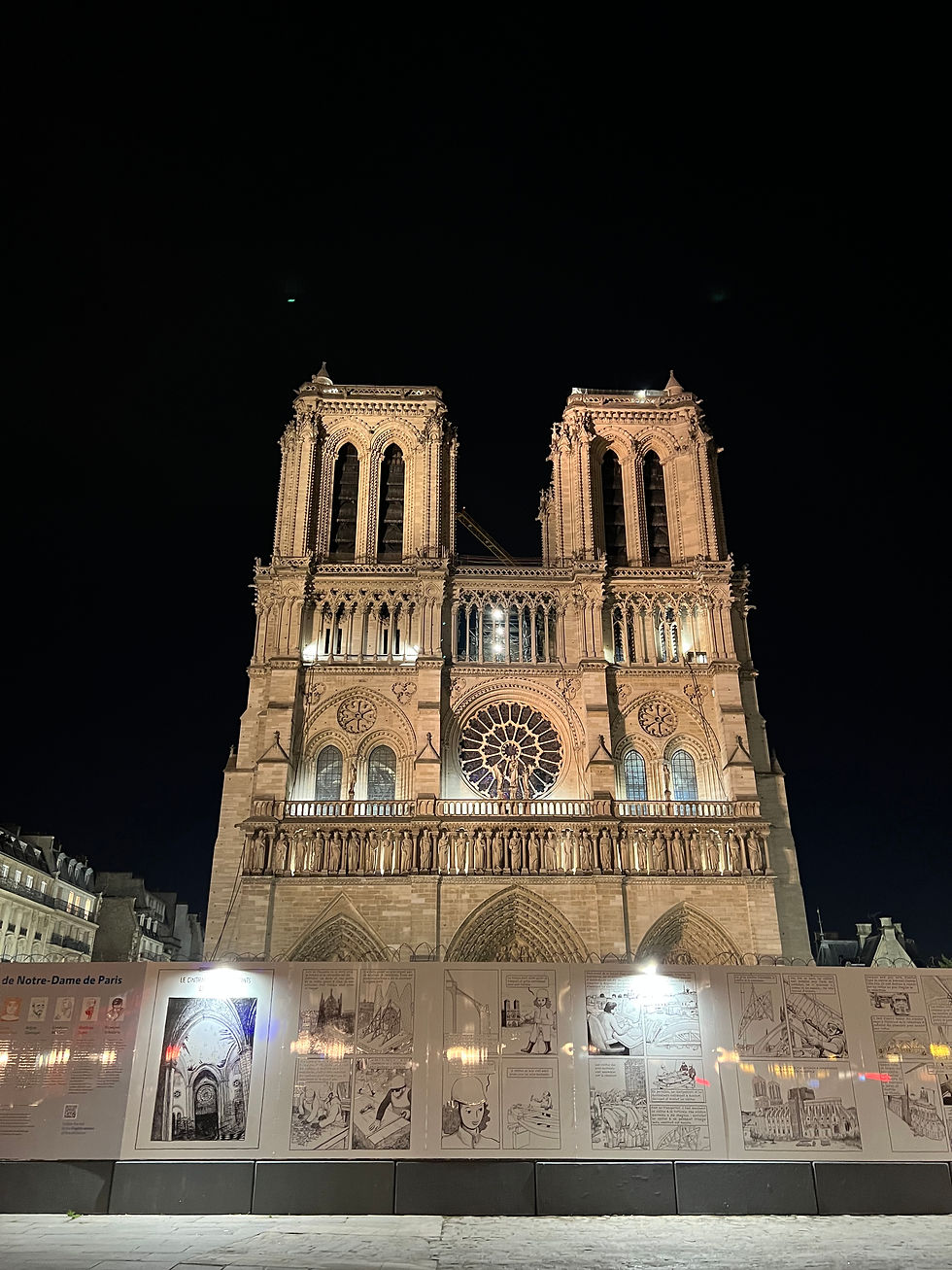
Built between 1163 and 1245 in the Île de la Cité, Notre Dame de Paris is one of the oldest Gothic cathedrals in the world and the name means "Our Lady", being dedicated to the Virgin Mary. Important events were celebrated in Notre Dame, such as the coronation of Napoleon Bonaparte, the beatification of Joan of Arc and the coronation of Henry VI of England. Throughout history, Notre Dame Cathedral has been refurbished on several occasions and on April 15, 2019, it was victim to a major fire, which caused massive structural damage to the roof and destroyed the main spire. For this reason it will remain closed to the public until the reconstruction works are completed (in theory 2024). However, Notre Dame deserves to be admired from the outside, during a nice walk on the Seine and the Île de la Cité, both day and night. Currently, on the fences that delimit the construction site around the Cathedral, you can find many explanatory posters with photos and explanations on the fire and the recovery and renovation works!
Latino Quarter and Sorbonne University

The Latin Quarter is perhaps one of the most beautiful areas of Paris, here you can breathe a distinctly French atmosphere, but sparkling and youthful, thanks to the many clubs and cafes, very popular with young students, hosting the Sorbonne University, one of the most prestigious university in the world. The Latin Quarter takes its name from the language spoken by the professors and students of this university. Since its inception, the Sorbonne has been a center of great intellectual vivacity welcoming illustrious minds such as the theologian Calvin, the philosopher and writer Jean-Paul Sartre, the anthropologist Claude Lévi-Strauss, the Nobel laureates for physics Marie and Pierre Curie and the philosopher Henri Bergson. In 1968 the French May, which would have ignited the dispute throughout Europe, started from here. The Latin Quarter is the ideal destination to spend your Parisian evenings, among beautiful restaurants and places to drink at a great price.
Shakespeare and Company
Shakespeare and Company is a historic bookshop located in the Latin Quarter, on the Left Bank, opposite the Île de la Cité. In the 1920s it became a meeting place for great writers such as Ezra Pound and Ernest Hemingway. A veritable literary institution in Paris, the bookshop also regularly organizes events such as Sunday Tea, book presentations, poetry readings and meetings with writers. It's a delightful corner of Paris, which deserves a stop on your walk in the Latin Quarter. Opening hours: Monday - Friday 10:00 - 23:00 Saturday and Sunday 11:00 - 23:00

Pantheon
In the heart of the Latin Quarter, not far from the Sorbonne, you will find the Pantheon, impossible not to notice, with its imposing size and the dome that protrudes from the buildings, visible from all over Paris. Once a place of worship of the patron saint of Paris, Sainte Genevieve, it has become a secular temple where the great personalities of France rest: Voltaire, Rousseau, Zola, Pierre and Marie Curie and many others. It's possible to climb the colonnade from April to October and admire Paris from above at 360 °. Opening hours: 10:00 - 18:00 Price: 11.5 €

Church of Saint-Etienne-du-Mont
The Church of Saint-Etienne-du-Mont is located on the Sainte-Geneviève mountain, on your walk from the Pantheon towards the Luxembourg Gardens. It's a splendid church that combines Gothic and Renaissance elements with stained glass windows and houses the tombs of famous people such as the mathematician Blaise Pascal and the writer Racine, as well as of Saint Genoveffa, patron saint of Paris. It became famous to all thanks to Dan Brown's film The Da Vinci Code, where the sundial that crosses it is said to lead to the discovery of the Holy Grail.
Luxembourg Garden
The Luxembourg Garden is a wonderful public garden, one of the largest in Paris, inaugurated in 1612 by Maria de 'Medici. It's the ideal place for a morning walk and to spend a few relaxing hours in the open air, in front of the Medici Fountain, where we ran into a remote-controlled boat race. In the garden you will also find many play areas, tennis courts and many groups that practice various sports: we attended a Tai Chi session.
Musée d’Orsay

After the Louvre, the Orsay Museum is certainly the other must-have museum during your trip to Paris. It's located in the old railway station that was inaugurated in 1900, on the occasion of the World Exhibition in Paris but which, at the end of the Second World War, was abandoned. In 1977 it was decided to transform the station into a museum, which was inaugurated in 1986. The structure of the museum consists of a large internal space, a central nave flanked by rooms arranged on five floors, so as not to force you to go through dozens of rooms before reaching the desired section. The art grouped in the Musée d'Orsay are in continuous enrichment and many temporary exhibitions are hosted: we were able to see a splendid one by Signac. I recommend that you take a look at the website to check what's special when you go, so that you can better organize your visit.

Inside you will find splendid works, always on display, produced between 1848 and 1914 and belonging to different artistic currents, including impressionism on the fifth floor. This was definitely my favorite part, there are works by Monet, Cezanne, Renoir and Degas. Another reason to visit the museum is certainly the famous station clock, which you can admire and photograph from the fifth floor, with a splendid view of the city. Consider a minimum stay time of at least 2 or 3h: I recommend starting from the fifth floor (the most beautiful part) so as not to miss it and then go down exploring the other floors.
Prices: Full: € 14 on the spot (€ 16 ticket purchased online) Reduced: € 11 on the spot (€ 13 ticket purchased online) Minors, disabled people, and children up to 25 years of age residing in the European Union: Free I recommend that you book online on the website, in order to skip the lines and be able to enter at the scheduled time. If, like us, you book for such an hour but arrive earlier, don't worry, they will let you in anyway without going through the ticket office. Opening hours: Monday closed Tuesday, Wednesday, Friday, Saturday and Sunday 9:30 - 18:00 Thursday 9:30 - 21:45
Pigalle
Pigalle is the "red light" district of Paris, located at the foot of the Montmartre hill, is famous for its sex shops and clubs for erotic shows. We took a tour of the many sex shops in the neighborhood: you will not be alone, there are many tourists who are looking for special souvenirs or simply want to have a laugh and see something different. On the same line is the Erotic Museum, on boulevard de Clichy: on various floors a collection of sexual objects from all over the world is exhibited. The area is similar to Amsterdam's Red Light District, but with a more Parisian character; it's definitely a part of Paris that is worth a visit, especially if you are planning keep going to the Moulin Rouge.
Moulin Rouge
Located in the Pigalle district, the Moulin Rouge is one of the most famous city "monuments" in the world, the historic cabaret theater, famous for its undressed dancers and can-can dance. Currently the Moulin Rouge is still operating as a venue, offering music and dance performances as well as luxurious dinners that are quite expensive.
Montmartre

Montmartre is the famous hill of Paris on top of which stands the basilica du Sacré Coeur; small cobblestone streets, ivy-covered houses, cute cafes and painters trying to make a living with their art make Montmartre one of the most beautiful and charming neighborhoods in Paris. Here you can get lost in the characteristic alleys, coming from Pigalle, on the way to the Sacré Coeur, stop in one of its cafes or buy some special souvenirs, until you get to Place du Tetre, the famous artists' square. In Montmartre there is also the Moulin de la Galette, the historic dance venue on the rue Lepic which was frequented by the most important artists in the world of painting and which was painted by Renoir in the work "Bal au moulin de la Galette", a masterpiece of early Impressionism, by Van Gogh in "Le moulin de la Galette" and by numerous other artists such as Picasso and Utrillo.

Le Murs de je t’aime
Once in Montmartre, don't miss le Murs de je t'aime, in the Abbesses metro area, at Square Jehan Rictus. It's a work of about 40 square meters by Frédéric Baron and Claire Kito, a wall made up of 612 blue tiles on which the words "I love you" appear in 311 different languages and dialects from all over the world. It's certainly a very romantic and particular place, testifying the fame of the City of Love that Paris holds. Access is free and there is usually not a lot of queue, but eventually the street artists who usually perform in the square will keep you company. Otherwise just take the chance to eat a delicious crepe waiting on queue.
Halle Saint-Pierre
Little known and off the beaten path of Paris, I recommend the Halle Saint Pierre. I's one of the most famous Art Brut exhibition centers, to the right of the Sacre Coeur. The structure is very special, with a wonderful "half-spiral" staircase that connects the two floors of the exhibition center: temporary exhibitions and bookshop on the ground floor, while the permanent exhibition is on the first floor. Inside you will also find a literary café on the ground floor, to the left of the huge library, where you can borrow a few books to accompany a hot chocolate. It is an atypical literary café for Paris, less touristy than the other cafes in Montmartre, great for a rest after climbing the Sacre Coeur basilica!
Sacré Coeur

At 130 m high on the Montmartre hill, it stands a real jewel of Paris, the Basilica of the Sacred Heart of Montmartre, which certainly has not gone unnoticed so far: clearly visible from the Eiffel Tower, the terrace of the Galeries Lafayette and many others points of the city. It has dominated Paris since 1924 and is one of the symbols of the French capital, a romantic and suggestive place that cannot be missed in your itinerary. Since 1914, despite the passage of time and pollution, the white building has remained immaculate .. if you wonder how this is possible, here is the answer! The stones used for construction secrete a white substance (mortar) which, due to the effect of the rain, becomes whiter.

Access to the Basilica is free, but to go down to the crypt (I don't recommend it, it's nothing special) and go up to the dome (83 meters high - 300 steps) you have to pay a ticket: € 8 for entry combined, € 6 for the dome alone and € 3 for the crypt. To reach the Basilica of the Sacred Heart you can use the Montmartre funicular, a means of transport active since 1900 which access is located near the Anvers metro and its cost is € 1.70. To get to the top on foot there are 197 steps, nothing demanding, and it will allow you to fully enjoy the landscape and gardens in front of the basilica, the Carrousel du Sacré Coeur, and the romantic and Parisian atmosphere that reigns here. If you want to take a break, you can join the many Parisians and tourists who sit on the steps or in the garden for a little relaxation.
Place du Tertre
Place du Tetre is considered the soul of Montmartre and gives it the name of the Painters' Quarter: it's certainly the most bohemian part of the area, ideal for both dining and seeing street artists at work. Indeed, Place du Tetre is the realm of artists, here you will find dozens of painters and designers to ask for a portrait or a caricature in many different styles, you just have to choose the one you prefer. Just think that in the past among these artists there were also Picasso and Utrillo (who also had their homes in the square!). Prices range from € 50 to € 100 on average, but some ask for even more. I have two from when I was little, they are wonderful, and I would have loved to do another one with Enri, but it can take even more than an hour so we preferred to postpone it until next time. However, we enjoyed the artistic atmosphere, exploring the narrow streets, and the cafes such as the famous Le Consulat or the Maison Rose.
Here we are at the end of these two days in Paris: the itinerary that I propose is nice, full and intense, but you can easily spread it on an extra day. To continue our journey with the post on the day spent at Disneyland Paris click here.
If you want do know someything more about where and what to eat in the French capital, click here. If, on the other hand, you are looking for some useful information on how to organize your trip, on where to stay and how to move around the city, click here for the article on logistics. That's all for now from Paris, have a nice trip!

























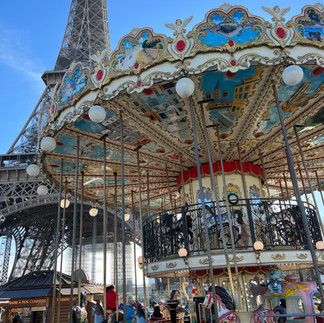

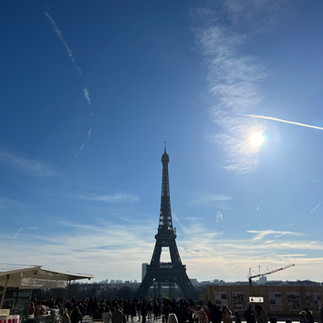



































































































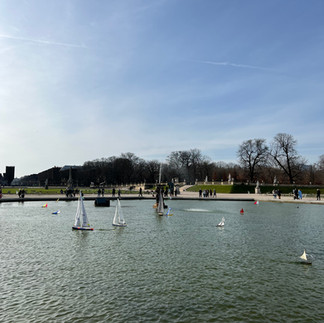













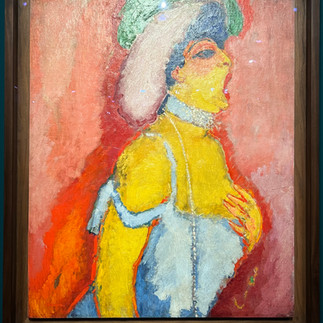












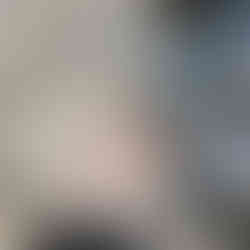



















Comments